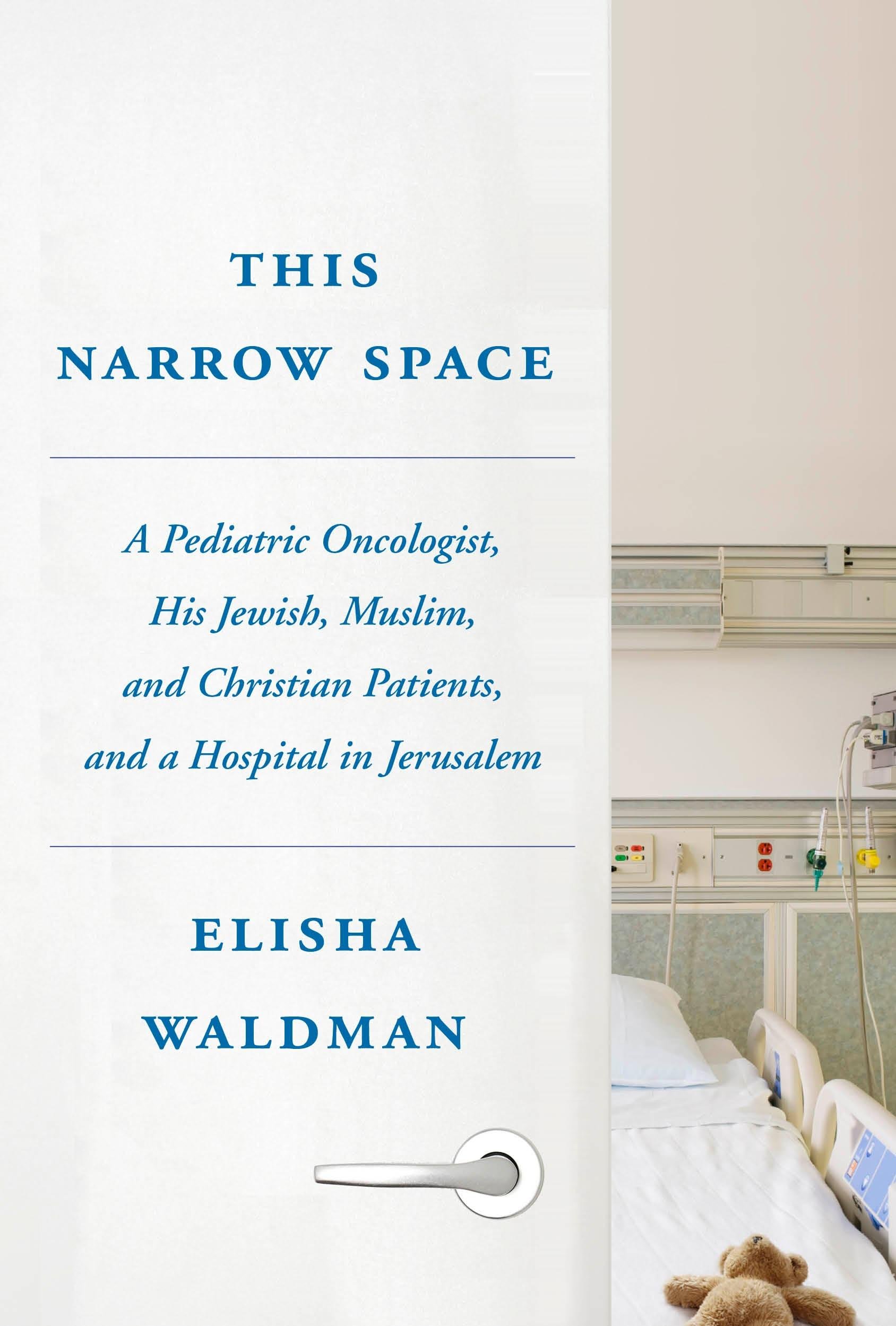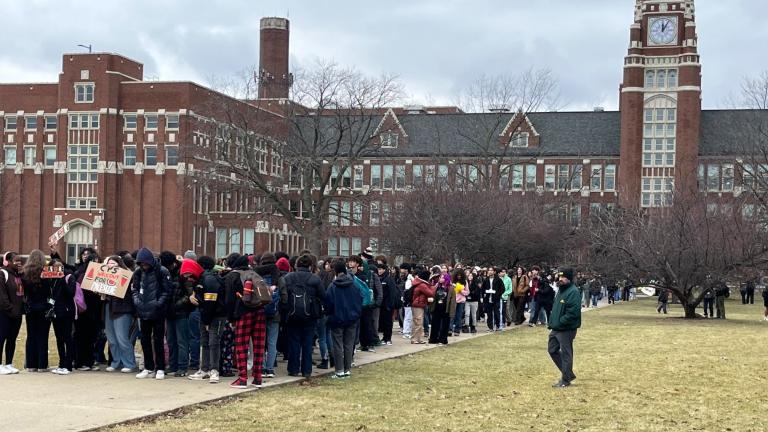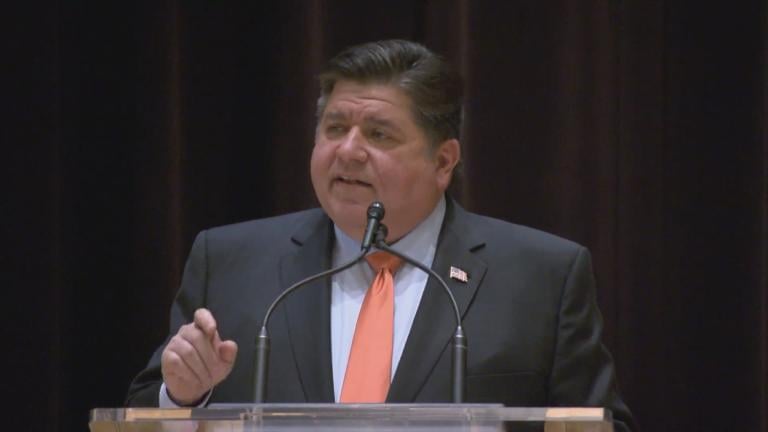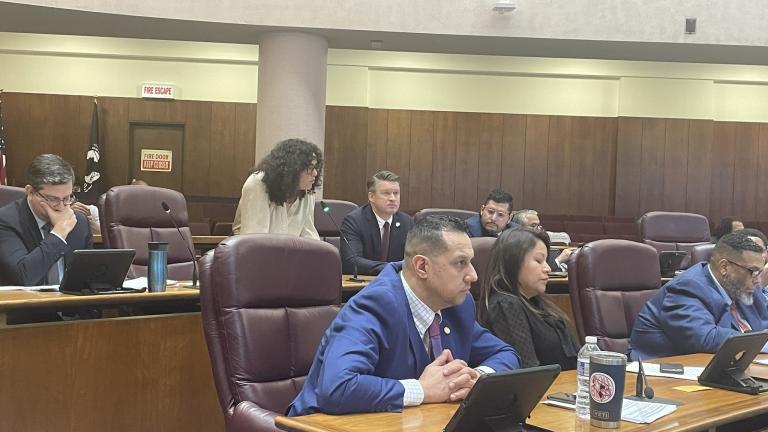What is it like to practice medicine in one of the most religiously and politically complicated cities on Earth? That is the subject of a new memoir by Dr. Elisha Waldman, called “A Pediatric Oncologist, His Jewish, Muslim, and Christian Patients, and a Hospital in Jerusalem.”
Waldman is an American Jew who worked at Hadassah Hospital in Jerusalem from 2007 to 2014. His patients included Jews, Muslims and Christians from within Israel and the occupied territories. Some families were very secular, others quite religious. The staff, too, was diverse.
Waldman left Israel in 2014. Today he is associate chief of pediatric palliative care at Lurie Children’s Hospital in Chicago. He discusses his experiences – including his reasons for leaving oncology for palliative care – with Phil Ponce.
Below, an excerpt from “This Narrow Space.”
![]()
 My role at Hadassah is to oversee the care of children with sarcomas, which are any one of a myriad number of solid tumors that form in such areas as the bone, muscle, and connective tissue. Because this is my first day and I am still getting oriented, I will be joined by the director of the department, Dr. Mickey Weintraub, who already met with Lena and her parents at her initial referral. I’m grateful for his presence. Although I have spent a great deal of my pre-aliyah life in Israel (I even attended medical school in Tel Aviv) and there is much that should be familiar to me, the way these initial conversations are carried out is so important in shaping the ongoing relationship between oncologist and patient, so critical in setting the stage for how decisions will be made, that I am wary of diving in by myself on my first day. I have, over the past few years, done this many times in the United States, first as a trainee and then for a year and a half as an attending physician. But I find myself worrying about the language barrier, the cultural nuances, the way in which I should be both delivering information and responding to cues from this young woman and her family. The intimacy of these discussions can be intense, and though this intimacy can be deeply rewarding, it can also be intimidating. I have taken up residence in Israel feeling fairly linguistically and culturally competent, able to manage the activities of daily living, but telling a seventeen-year-old Israeli Arab that she has a life-threatening condition is a very different challenge. In many ways, I feel I am starting my training all over again.
My role at Hadassah is to oversee the care of children with sarcomas, which are any one of a myriad number of solid tumors that form in such areas as the bone, muscle, and connective tissue. Because this is my first day and I am still getting oriented, I will be joined by the director of the department, Dr. Mickey Weintraub, who already met with Lena and her parents at her initial referral. I’m grateful for his presence. Although I have spent a great deal of my pre-aliyah life in Israel (I even attended medical school in Tel Aviv) and there is much that should be familiar to me, the way these initial conversations are carried out is so important in shaping the ongoing relationship between oncologist and patient, so critical in setting the stage for how decisions will be made, that I am wary of diving in by myself on my first day. I have, over the past few years, done this many times in the United States, first as a trainee and then for a year and a half as an attending physician. But I find myself worrying about the language barrier, the cultural nuances, the way in which I should be both delivering information and responding to cues from this young woman and her family. The intimacy of these discussions can be intense, and though this intimacy can be deeply rewarding, it can also be intimidating. I have taken up residence in Israel feeling fairly linguistically and culturally competent, able to manage the activities of daily living, but telling a seventeen-year-old Israeli Arab that she has a life-threatening condition is a very different challenge. In many ways, I feel I am starting my training all over again.
When Lena and her parents arrive, I am still preparing the office for the meeting: organizing chairs, getting the clutter out of the way, making sure there are tissues on the desk, unobtrusive but handy, available for the tears that will surely come. As they enter, I try to compensate for the language barrier by smiling and giving them a hearty “shalom.” I come around from behind the desk and stick my hand out in greeting. Lena, limping, lags behind, so her mother is the first person to whom I offer my hand. She stares at it awkwardly, and everyone stops, unsure what to do. It takes a moment for me to register that both she and her daughter are wearing hijabs, and that for them physical contact with any man other than immediate family members is prohibited. Lena’s father kindly rescues us, dodging around his wife and thrusting his hand into mine, pumping it firmly while Lena and her mother slide into their seats. I retreat behind the desk. I am already worried that I have just compounded this family’s anxiety by introducing an element of cultural discomfort. I realize how much I’m worrying, and I worry even more that they can sense this.
Mickey and the Arabic-speaking social worker have not yet arrived, leaving us all drowning together in a tense, painful silence. My Arabic is barely good enough at this point to say good morning, let alone to make small talk to try to put them at ease, and Lena’s parents speak virtually no Hebrew. Perhaps it’s better that way: they can’t start asking me difficult questions while I am feeling new, alone, and exposed. I pointlessly tidy the desktop while we all smile uncomfortably at one another. I mostly try to avoid making eye contact with Lena’s parents, though I can feel their eyes probing my face, my body language, for some hint as to what is coming. Lena is slouched down in her seat. She’s a lanky teenager, with her hair modestly covered in a plain blue headscarf. She is also wearing a rhinestone-studded sweatshirt, blue jeans, and sneakers. It’s a curious and charming blend of Western teenage fashion and Middle Eastern religious sensibility. Sparkles of glitter on her sneakers remind me that though we are about to have a very adult conversation, this young woman is still in many ways a child. She stares at the floor. I sense she must know in her heart what she is about to hear.
I take some comfort in the elements here that are familiar, mentally breaking the situation down into its fundamental components and reviewing the steps we are about to take. In oncology training we learn the concept of the “day-one talk,” the essential elements that a clinician must cover in order to start moving forward with treatment. These include explaining what cancer is, why it is so dangerous, and what type of cancer the patient has. We also discuss treatments and their side effects and risks. And somewhere in there, though we focus on hope, we bring up the possibility of death. Lena’s thin, bony arms, evident under the loose sleeves of her hoodie, as well as her slightly sunken cheeks tell me that she is already suffering the metabolic effects of having a large and growing tumor in her body. This is the paradox of cancer: exuberantly unrestrained cells keep dividing with no respect for boundaries or pacing, no ear for the rhythm of life, and this is what leads to death.
Once we have navigated the day-one talk, there are procedures that will have to be scheduled before treatment can begin. There will be an echocardiogram to make sure Lena’s cardiac muscle can handle the chemotherapy and to establish a baseline to monitor for future damage, a hearing test (for similar reasons), and perhaps the removal and freezing of an ovary to mitigate the infertility that will almost certainly result from the chemo. We will need to reserve an operating room for the insertion of a port under the skin of Lena’s chest—a silicon bubble attached to a small tube that feeds into a deep blood vessel. Inserting a needle through the skin and into the bubble with each course of chemotherapy will lessen the possibility of infection and allow for safer administration of our toxic medications.
Reviewing these elements calms me—my own Buddhist-like mantra. There is a moment of quiet just before the discussion with the patient begins, similar to what I imagine goes on backstage at a performance as the actors take their places before the curtain rises. I experience it as though time has slowed, and I wonder if the patients and their families experience the same thing, these last few moments when they can hope that this will all just go away. It’s a time when even I sometimes fantasize that this is simply a bad dream from which I can awake and the child will be fine. I use this time to clear my thoughts, to say a quiet prayer—to any god that may be listening—for wisdom and clarity in what we are about to do.
As if sensing my readiness, Mickey and the social worker finally arrive, and we can begin. A native-born Israeli Jew, Mickey is a kind and unassuming man. He leads by example, rarely resorts to discipline, and is deeply loved by staff and patients alike. A full three years before making aliyah I met him while on a job-scouting visit to Israel and knew within minutes that someday I would end up working for this man. I find myself addressing him as “boss” or “sir” as a half-joking sign of respect. He would never expect anyone to treat him with such formality, though he very much deserves it. He’s omnipresent in the department, and I will come to appreciate how much his calm demeanor contributes to the safe space that this place represents.
The social worker is a young Israeli Arab woman who is here as much to lend support to Lena and her family as to act as a translator and cultural mediator for us. Mickey begins gently but with purpose, and the discussion proceeds rapidly. He moves deftly, like an experienced surgeon neatly dissecting layer after layer of tissue to expose an injured organ, following a template that I am more or less familiar with from the United States. It again strikes me that there are elements of this work that are universal. Regardless of nationality, ethnicity, or religion, the goals and challenges of the day-one talk are pretty basic. In this first meeting the family will likely absorb only a limited amount of the information presented. Give them what they need to begin the process, but recognize that, as treatment progresses, there will have to be many more discussions to reinforce what we are attempting to convey and to elaborate on it as necessary.
The conversation takes on its own rhythm, in part because of the need for translation. I have worked through interpreters in the past, but perhaps because I’m full of adrenaline, at this moment I am particularly aware of this rhythm. Mickey and I speak English with each other, conferring about what information to present next or how to respond to a question. He then conveys our response in Hebrew to the social worker, who in turn translates it into Arabic for Lena and her parents. They respond in Arabic, which is translated back to Hebrew by the social worker, and Mickey then translates it into English for me to make sure I understand. The whole process, while in some respects cumbersome, takes on an ebb-and-flow that provides, at least for me, a certain comfort. The pauses allow me time to think, to evaluate their responses, to watch their body language, and to think about where we should next steer the conversation. I know from past experience that these discussions can easily devolve into fear, anger, or even outright panic. But now, the very regularity of the conversational rhythm gives the room a sense of order and control that I, and hopefully the family, find reassuring.
Lena does not speak. Her mother, wide-eyed, lips trembling, fingers working a tear-soaked tissue to shreds, radiates waves of desperation as she speaks—no translation is necessary. Lena’s father, buttoned-down, expressionless, asks just one or two concrete, pragmatic questions: prognosis, next steps. They return again and again to the leg and the question of amputation. We assure them that almost all tumors like Lena’s can be removed with limb-sparing surgery, but we also slip in that we can’t make any promises, that it is a surgical decision, and that it depends in part on how the tumor responds to the chemotherapy. In short, that we hope but we don’t know for certain. Typically, patients with this sort of tumor start off with about three months of chemotherapy, both to shrink the tumor and to mop up any cancerous cells that may have already escaped and spread, in numbers too low to detect, to other parts of the body. We hope that amputation will not be necessary, but starting cancer therapy is something of an act of faith, with many unknowns down the road.
The meeting draws to a close. There is only so long a patient and her family can be subjected to this sort of conversation, and we want to allow them time to process what they have been told, to formulate new questions, and to begin to adjust to their new reality.
And we, too, must move on. Despite the intimacy of these meetings, they are often just one in a series of many similar interactions throughout the day, and we have to be mindful of the need to allow other children to be seen, to give other parents the opportunity to ask questions. It almost feels deceitful the way we carefully orchestrate these interactions, so full of emotion, only to repeat the scene moments later in another room but with a different set of players. It’s not that the emotions are false, the empathy we convey fabricated, but there is something manufactured about the way in which we are genuinely present in each discussion while still managing to create some emotional space within ourselves for the next one. It’s a skill, though not one you’re ever taught. And it’s certainly a skill that, if not done well, runs risks, either of clinician burnout or of projecting insincerity to patients. But I’m young and I’m still trying to figure this all out, to understand where to put all this baggage as the day races on from patient to patient.
Excerpted from This Narrow Space by Elisha Waldman. Copyright © 2018 by Elisha Waldman. All rights reserved. No part of this excerpt may be reproduced or reprinted without permission in writing from the publisher.
Related stories:
130 Artists Unite to Complete Chicagoan’s Graphic Novel
Trump Sets Off Middle East Protests Over Jerusalem Announcement
Exploring the Mysteries of Anesthesia in ‘Counting Backwards’







